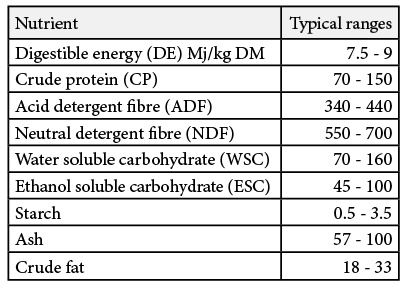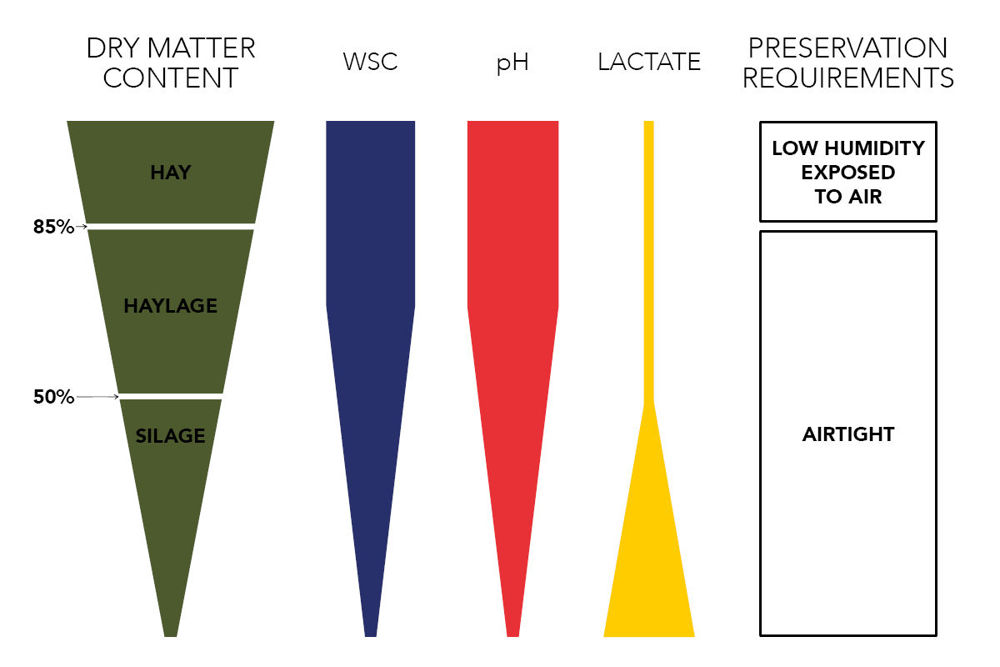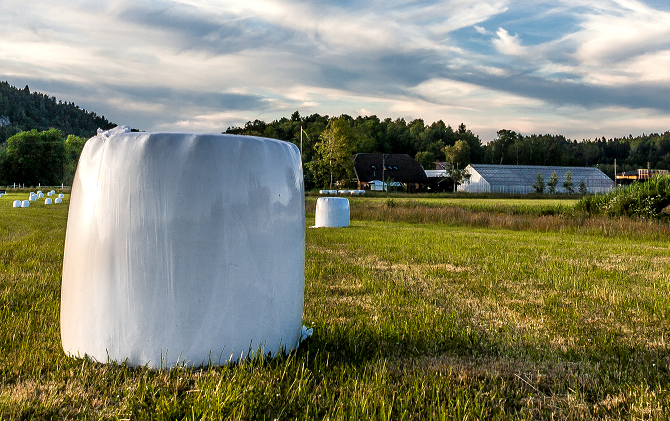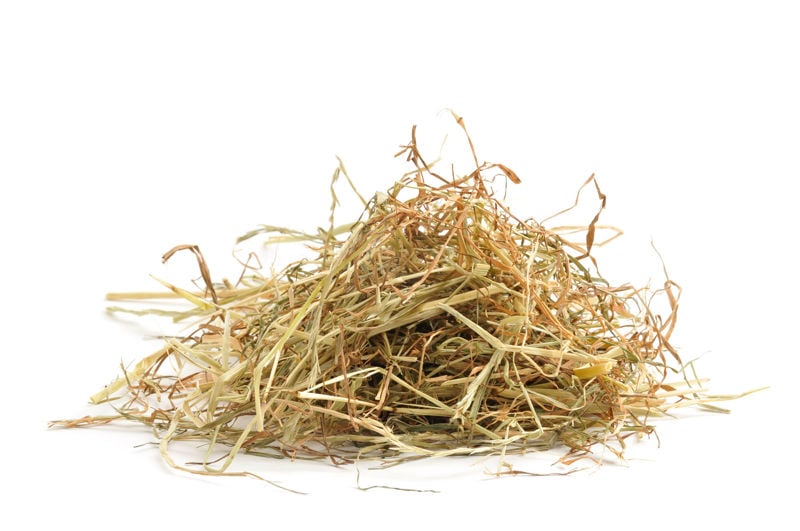Professor Jo-Anne Murray, PhD, MSc, PgDip, PgCert, BSc (Hons), BHSII, RNutr, PFHEA, FRSB
University of Glasgow
&
Dr. Simon Daniels, PhD, PgCert, BSc (Hons), SFHEA, R.Anim.Sci,
Senior Lecturer at Royal Agricultural University
Forages represent a diverse range of feedstuffs that form the basis of the diet of herbivorous domestic animals, including horses. In the UK, forages are derived from a number of sources; however, the principal forage is undoubtedly grass, which may be consumed in situ (i.e. grazing) or after conservation as silage or field-cured hay. The most frequently used grass species include the ryegrasses; perennial ryegrass (Lolium perenne) and Italian ryegrass (Lolium multiflorum), Timothy (Phleum pratense), Cocksfoot (Dactylis glomerata), and the fescues (Festuca spp.).
Legumes are also important forage crops, which have received increased attention in recent years as the need to reduce both the economic and environmental costs of UK livestock production has risen. Forage legumes are valuable in agricultural systems due to their ability to ‘fix’ nitrogen from the atmosphere through their association with nitrogen-fixing bacteria contained within root nodules. The main forage legumes grown in temperate climates, such as the UK, are species of Trifolium and Medicago, more specifically, red clover (Trifolium pratense), white clover (Trifolium repens) and Lucerne (Medicago sativa). As such, the small amount of Lucerne grown in the UK is harvested mainly for silage or artificial drying. However, in other parts of the world, notably the USA and middle east (where it is known as alfalfa), the crop is also used for grazing and sun-drying. The nutritional value of forages is positively related to their degradability, which in turn is related to their chemical composition. Thus, to evaluate the nutritional value of forages for horses it is important to examine their chemical and structural features.
CHEMICAL & STRUCTURAL CHARACTERISTICS OF FORAGES
In terms of their chemical composition, forages contain carbohydrates (CHO), protein, a small amount (~5%) of lipid (oil), vitamins and minerals. The mineral content of pasture plants is variable and depends on several factors such as plant species, soil type, stage of growth, fertiliser usage etc. In terms of vitamins, as a rule of thumb most green forage crops are an excellent source of the Vitamin A precursor β-carotene, Vitamin D precursor ergosterol, Vitamin E and many of the B vitamins.
The structural characteristic of forages is an important aspect of their nutritional value. The presence of a cell wall surrounding the cell contents is one of the characteristic features of plant cells that differs to animal cells. This wall functions to provide rigidity and protection to the plant without preventing diffusion of water and ions from the environment into the plant cell. As the plant matures, the ratio of cell wall to cell contents increases, especially in the stem, as a means of providing support for the growing plant. Therefore, plant cells as a whole contain nutrients that are present in the contents of the cell (proteins, lipids, and non-structural carbohydrates) and also nutrients that reside in the cell wall, which predominantly consists of structural CHOs and some proteins. Structural CHOs are divided into three classes, cellulose, hemicellulose and pectin.
Plant cell wall components are generally referred to as the fibrous fraction of the plant and are often collectively described by the term dietary fibre. Plant cell walls serve as a major source of energy for horses, as the structural CHOs are degraded in the hindgut of the horse by the resident microbes, which produce volatile fatty acids (VFAs) that are used as an energy source by the horse.
It is important to understand CHOs in horse diets, because how we refer to these in horse diets is different to how we think of them in our own diet. In humans, we often talk about a low CHO (or low carb) diet. This refers to a low non-structural CHO (NSC) diet. The NSCs in forage crops include simple sugars, fructan and starch. The storage carbohydrates of temperate grasses include fructan and the sugars glucose, fructose and sucrose, which together constitute the ‘water soluble carbohydrate’ (WSC) fraction of the plant. In temperate grasses, fructan is the most abundant NSC, and is mainly found in the stem of the plant.. The fructan content of grasses may vary depending on light intensity, photosynthetic rates, temperature and growth rates, and under favourable conditions they may constitute a considerable proportion of total dry matter (DM) of the grass. By contrast, starch is the storage carbohydrate of legumes, such as alfalfa, and accumulates in the leaves and seeds of these crops. Starch is a polymer (chain) of glucose residues and in legumes, starch is only accumulated in small amounts up to 50g/kg DM (5%). In human diets, when we talk about CHO, we are usually referring to starch. In horses, we cannot feed a low CHO diet because horses need fibre in their diet and fibre contains high amounts of structural CHOs (see Your horse’s gastrointestinal structure and the Importance of Gut Health)
Another constituent of the plant cell wall is lignin. Lignin is a compound you may have heard of. It is important to point out that lignin is not a CHO, but it is closely associated with them. As the plant grows, the amount of structural CHOs present increases along with lignin. Lignin provides structural strength to the plant and is therefore present in higher amounts in the plant stem. Lignin is almost completely indigestible and because it entwines itself around the structural CHOs it can reduce the digestibility of them by preventing the microbes in the hindgut from accessing the cellulose, hemicellulose and pectin. This is why more mature forages, such as grass hay, which has a greater proportion of stem compared to younger pasture, is less digestible than immature grass in pastures. Therefore, in terms of digestibility, the extent to which fibre is degraded in the hindgut varies according to plant species, stage of growth and the composition of the cell wall. Therefore, it is advisable to analyse forage to understand its nutritional composition, which varies considerably as seen in Table 1.
Table 1. Composition of grass hay (g/kg DM, unless otherwise stated)

Mj: megajoules
CONSERVED FORAGES FOR HORSES
Pasture herbage is the natural feed of horses; however, seasonal growth in temperate climates necessitates the need to conserve forage for winter feeding. Furthermore, many performance horses receive little time at pasture, regardless of season; subsequently many receive their forage in a conserved form all year round.
The main objective of forage conservation is to preserve as much of the digestible nutrient content of the herbage as possible. This can be achieved in several ways; a) by reducing the moisture content to a level at which chemical breakdown and microbial degradation cease, as in haymaking and artificial dehydration; or b) by the acidification of high moisture herbage by anaerobic fermentation, which inhibits the activities of plant enzymes and spoilage microorganisms, as in silage making.
Hay is plant material that has been air-dried to a sufficiently low moisture content (~15% or less), to ensure a stable product resistant to microbial degradation under ambient conditions. The process of hay making involves cutting the grass, turning the grass in the field over a number of days to aid drying before baling. This takes around 5 days and is highly weather dependent which, in the UK, is generally most favourable in early summer when the herbage is relatively mature, and thus has a higher DM content than immature crops (Figure 1).
In artificial dehydration, younger, high-digestibility herbage of high moisture content can be dried when field drying would be impossible, and thus a short-cutting cycle regime (i.e. a cutting interval of less than 36 days) is generally employed for herbage that is conserved in this manner. Drying can occur at either relatively low temperatures (150-250℃), or more commonly at high temperature (600–1000℃) in rotary-drum driers. In the process of high-temperature (HT) drying the herbage is mown, wilted overnight, harvested to a chop length of 75mm lengths (necessary for the operation of the drying equipment), dried, cooled, and stored for future use. Artificial dehydration is the most efficient method of conserving forage, since nutrient losses are low, resulting in material that has a similar feeding value to the original herbage.

Figure 1. Schematic of the characteristics of hay, haylage and silage made without additives, showing the requirements for making quality forage. (WSC – water soluble carbohydrate content, pH – acidity level of forage, lactate – starts to be produced when WSC and pH decline). (adapted from Harris et al., 2017).
Quite distinct from the conservation of herbage by drying, is the process of ensiling, in which high moisture herbage is preserved by the anaerobic fermentation of plant WSC to lactic acid, by lactic acid bacteria present on the forage. The production of lactic acid lowers the pH, inhibiting plant enzyme activity and the growth of undesirable spoilage microorganisms, such as clostridia and enterobacteria spp., thus ensuring effective and hygienic preservation of the herbage. The exact level of acidity required to inhibit clostridial activity is dependent on the DM content of the silage. Clostridia can tolerate high concentrations of acid in environments where water is freely available, whereas, on wilted material with a DM content of above 350g/kg clostridia are inhibited by a lack of moisture and therefore such a decrease in pH is not required. This explains the difference between silage and haylage, silage has a higher moisture content than haylage and is why haylage can be difficult to classify as it sits somewhere between hay and silage. It is wetter when conserved than hay and relies on air exclusion but has a lower moisture content than silage. Because the moisture content of haylage could be between 15-40% the conservation, e.g. amount of fermentation, can be variable. Haylage is more commonly fed to horses and can be made from a variety of crops, including grasses and legumes, but is commonly made from grass in the UK. The process of haylage making involves cutting the grass, turning the grass once to reduce some of the moisture content (also known as wilting) and then baling and wrapping the haylage. This process takes two to three days, whereas in silage making the grass is typically cut, baled and then wrapped the following day as silage has a higher water content than haylage.
In the UK, hay, haylage and silage are most commonly made from grass; however, it is also possible to preserve alfalfa in these different ways. The main issues are the climate in the UK to field dry the alfalfa for hay, this is commonplace in other parts of the world, and also the alfalfa itself is less suitable for ensiling due to its low WSC contents. It is very common in the UK to preserve alfalfa by high temperature drying.
FEEDING CONSERVED FORAGE
Horses are commonly fed a variety of forages, both long forage in the form of hay or haylage, and short chopped forages such as high temperature dried alfalfa.
Feeding horses conserved forage is typically associated with feeding hay, however a range of conserved forages can be fed to horses (Figure 2). Historically hay has been identified as the most popular UK forage for horses, however, changing weather patterns, difficulties in sourcing small bales, and convenience have led to an increased use of haylage. Studies have identified that horse owners do have an understanding of what haylage is, but in their study, there was some confusion over spoilage times once a bale was open, the suitability of haylage for differing horses, and types of analysis that can be carried out on haylage to gauge nutrient and hygiene quality. Historically there was a belief that horses would not eat silage as it was “too rich” and “unpalatable”, however previous feed intake studies have identified in preference trials that intake was greatest for silage, then haylage, and hay was the least preferred and always the forage with some orts left. Interestingly other research has identified that horses would eat clamp silage, however their intake was significantly less than baled silage or haylage, but the quantity ingested met their nutrient requirements, therefore suggesting that the nutrient profile triggered the voluntary food intake response, preventing excess intake. Clamp silage is likely to have a higher moisture content than baled silage and therefore a different nutrient profile. Collectively these studies suggest that horses will happily eat silage at differing dry matters in the same way that they eat haylage, which is essentially just dryer silage.

Figure 2. Haylage is the most common wrapped forage fed to horses although research has shown that silage can also be a suitable feedstuff.
Making use of ensiled forages such as haylage and silage has been used successfully to replace the need for cereal concentrates in both young growing foals and in performance horses in training without affecting performance. Ensiled forages therefore provide a high energy and high fibre diet option with health benefits to horses, e.g. increased chewing time and reduced risk of growth abnormalities, without limiting performance or growth trajectory. Moreover, feeding forage helps maintain gastric health, and additionally feeding alfalfa can also help maintain pH in the upper part of the stomach as alfalfa can buffer any decline in pH.
There is a perception by some equine dental technicians and veterinarians that ensiled forages are associated with peripheral dental caries (cavities due to tooth decay). Another area of potential haylage confusion is that if haylage/silage is well fermented then it should be low in water soluble carbohydrates (WSC) as WSC is used in the process of fermentation. It was found that most horse owners thought haylage would have higher WSC, which if the haylage has a higher DM and is conserved by air exclusion with little fermentation, then potentially the WSC could be higher than hay. The WSC content of haylage will depend on the grass sward the forage was produced from and the maturity of the plant at the time of cutting. Notably,it was identified that owners were concerned about feeding horses with gastric ulcers or laminitis haylage. When compared to concentrates haylage does not appear to cause a significant drop in stomach pH and as with long forage, the chewing involved produces ample saliva to buffer gastric juice. While theoretically ensiled forages could be lower in WSC and therefore appear more suited to laminitic prone animals, the overall energy content of this forage could still be too great. Depending on the conservation, species and DM, haylage could be higher in WSC than hay and illicit a higher glycaemic response, where haylage increased blood glucose more than hay, and soaked hay had the lowest response. When considering this we should be mindful that this will be influenced by the grass sward, plant maturity and the DM content at conservation and this may be of concern for animals with metabolic conditions but not for healthy animals.
Ponies fed haylage as opposed to hay had altered gut microbiota and metabolic profiles than hay fed horses. These findings are altered with season are are supported by resarch that the faecal microbiome of grass kept horses altered when they were supplemented with haylage. This suggest that the different conservation processes between hay and haylage alter the gut microbiota to degrade the differing forages and produce different metabolic profiles within the animals reflecting this. This therefore suggests that while both hays and ensiled forages all start as grass, the way they are preserved influences the way they are metabolised.
SUMMARY
Collectively these different studies suggest that ensiled forage of differing dry matters can be highly beneficial to horses, including young rapidly growing animals and performance horses, to reduce the need for cereal concentrates which can provide health benefits to horses. There are some situations where ensiled forages may not be suitable for specific types of horses and ponies, notably these appear to be in animals prone to laminitis. By knowing the profile of your forage e.g. the type of grass it was conserved from, the plant maturity at cut and the moisture content and nutrient profile, then it should be possible to decide if you have the most suitable forage for the requirements of your horse.


